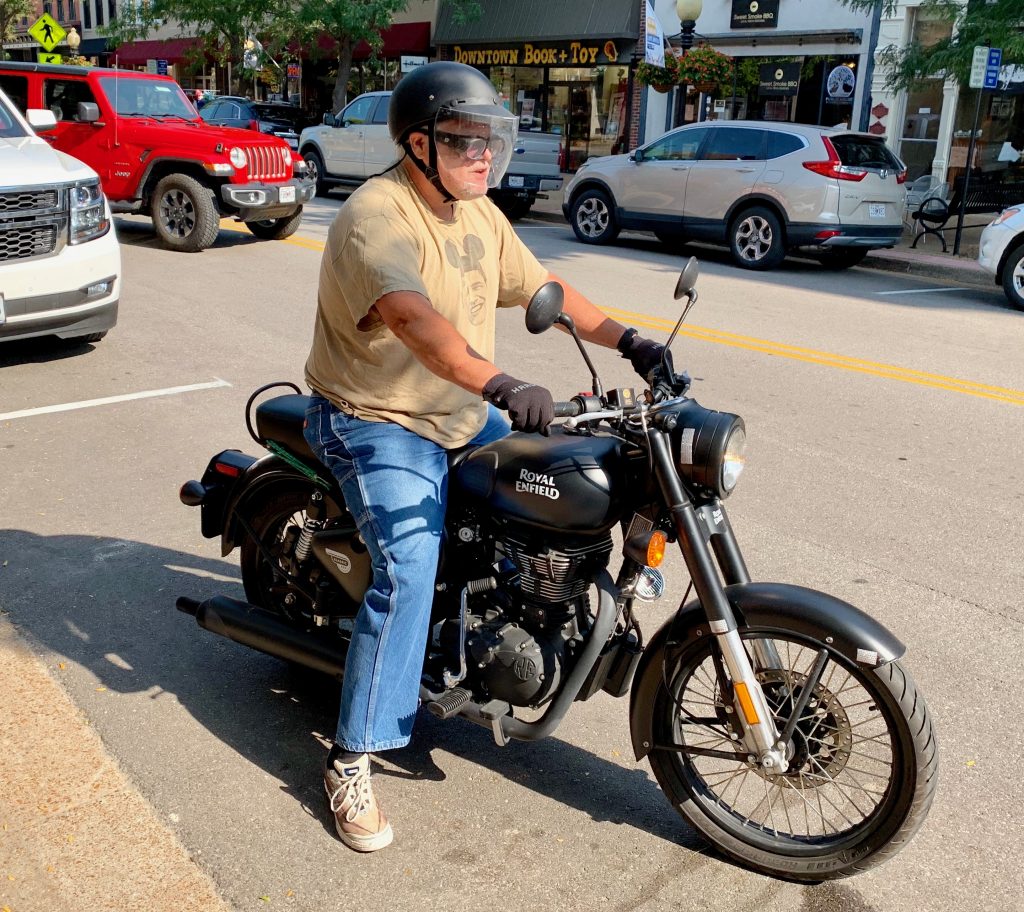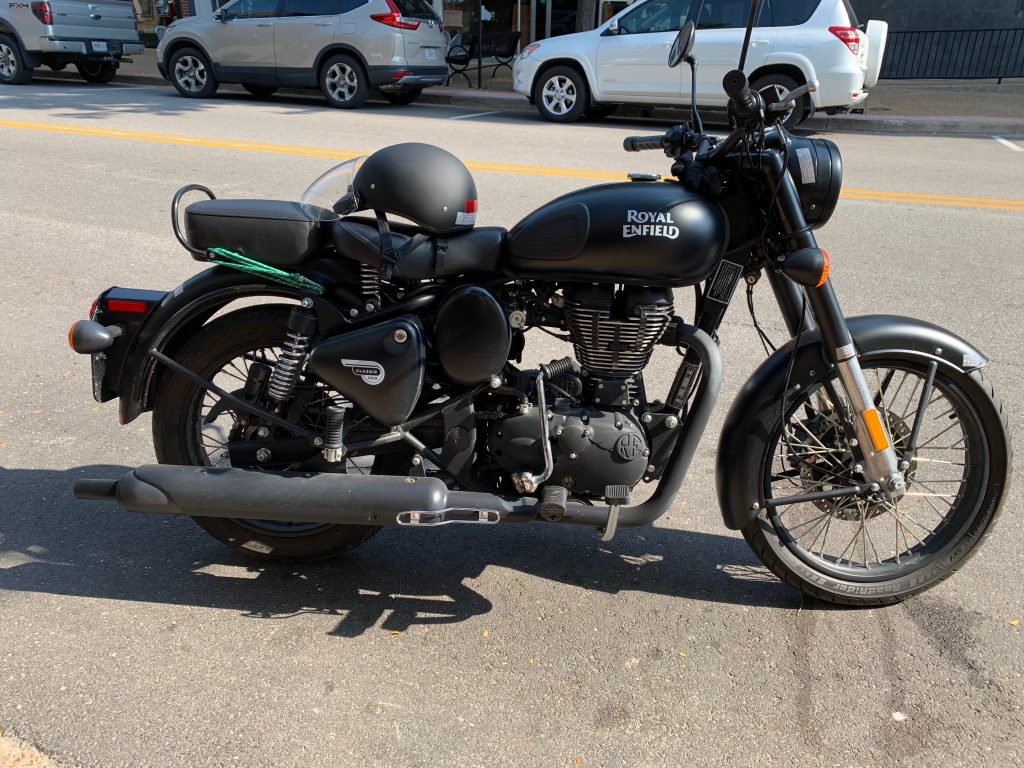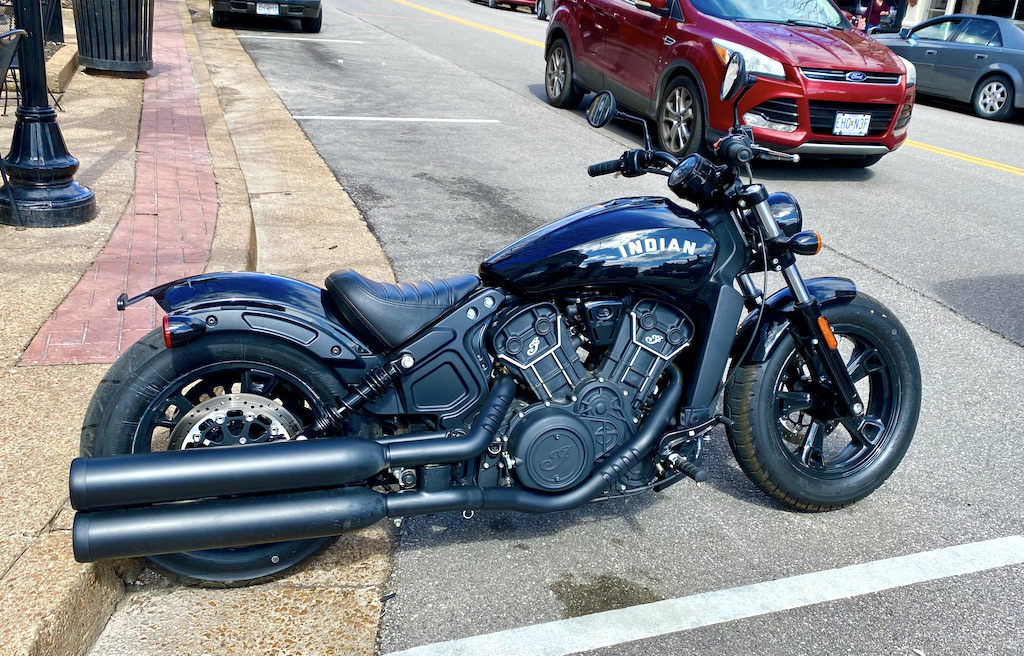
Spotted this motorcycle in front of our local coffee shop. I know nothing about motorcycles but find this one especially beautiful. No saddlebags. No radio. No cupholder. No windscreen! No place for a passenger.
Category Archives: Transportation
Mean Motor Scooter
Mr. Wolf reports: “I went to Santa Cruz last night to buy a very cool old motorcycle for a customer; my first social distancing vehicle purchase. A 1963 Puch SGS (aka Allstate). It’s a mechanically interesting bike. A “split single” two stroke. Two pistons going up into one combustion chamber!”

Universal Driving Gestures
 As soon as I started driving my old Land Rover around town I started getting the “thumbs up” gesture from other drivers. Almost always with a smile. This gesture is clearly meant to convey something positive. They like/admire the Rover. Wikipedia has a page on the history of the gesture. I love getting the thumbs up and started wondering why there are not more universally (at least in English speaking countries) recognized gestures between motorists. The only other one I can think of is The Finger. The other end of the approval spectrum, if you will.
As soon as I started driving my old Land Rover around town I started getting the “thumbs up” gesture from other drivers. Almost always with a smile. This gesture is clearly meant to convey something positive. They like/admire the Rover. Wikipedia has a page on the history of the gesture. I love getting the thumbs up and started wondering why there are not more universally (at least in English speaking countries) recognized gestures between motorists. The only other one I can think of is The Finger. The other end of the approval spectrum, if you will.
Traveling Vintage Bus Mechanic
My friend George has a thing for old buses. He has two, one in better shape than the other. But both need work and they are not the sort of vehicles you can put on a trailer and take to the shop. So George called the “Bus Grease Monkey.“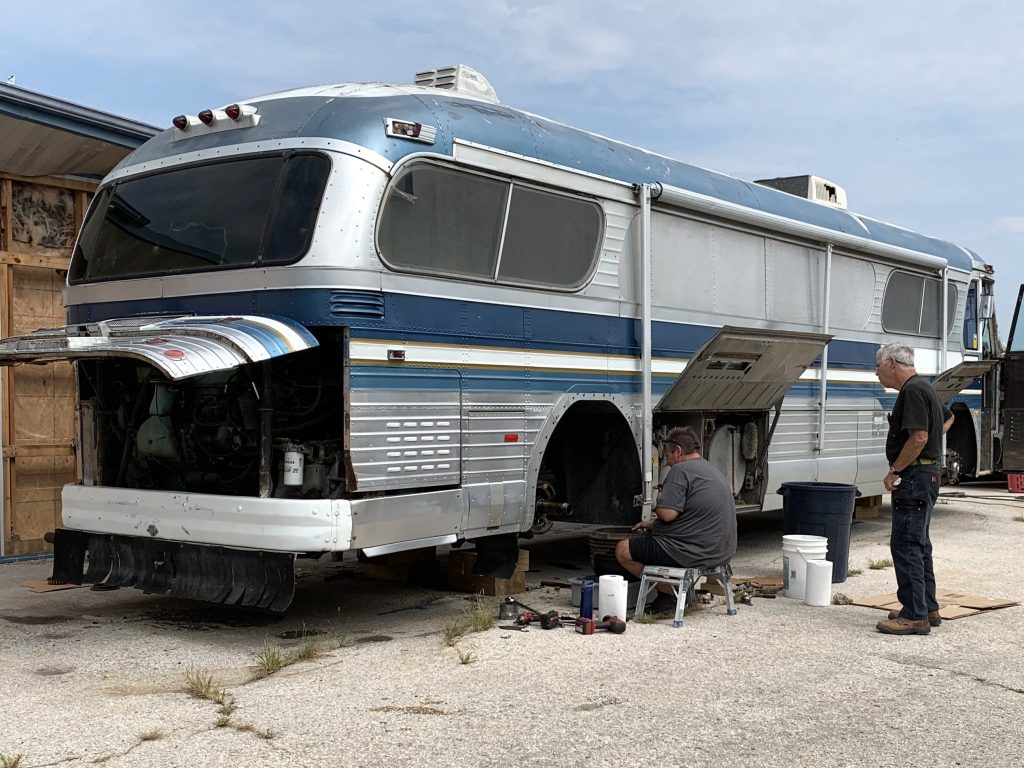 Scott travels all over the country, working on old buses. Appropriately, he travels in an old bus (below). Don’t miss his “How I got in this business” video.
Scott travels all over the country, working on old buses. Appropriately, he travels in an old bus (below). Don’t miss his “How I got in this business” video.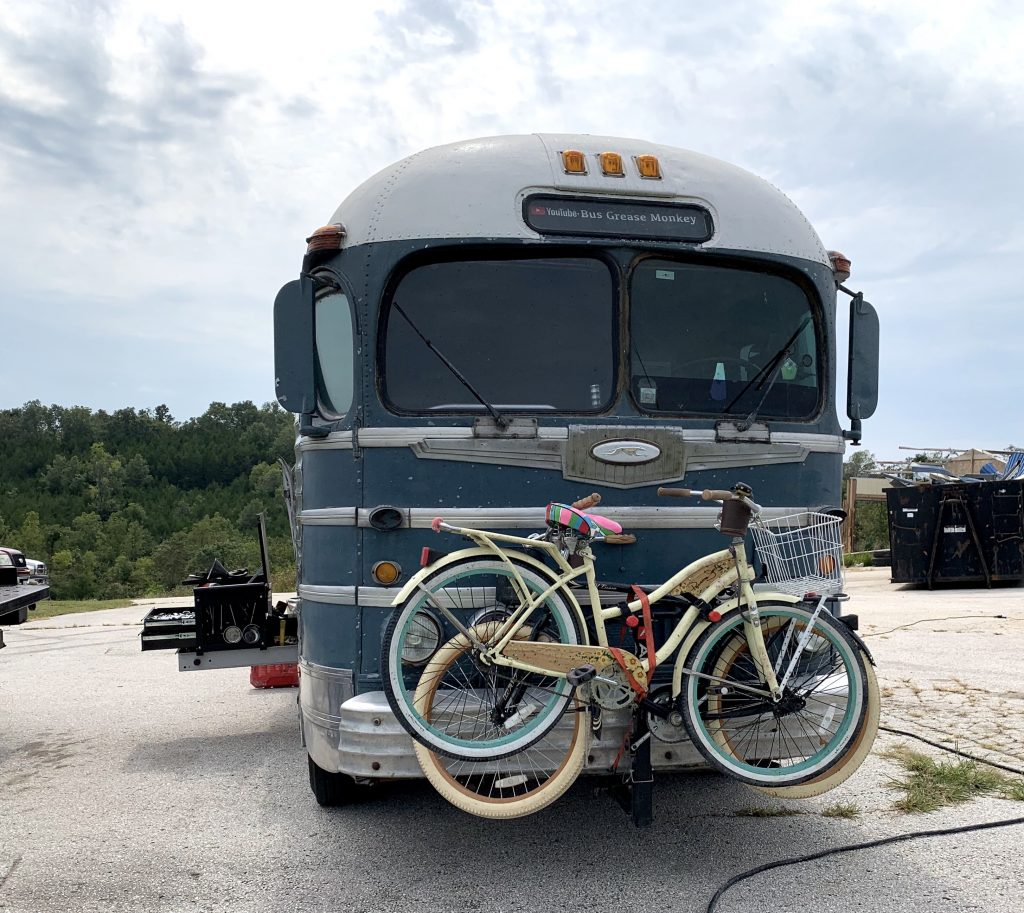
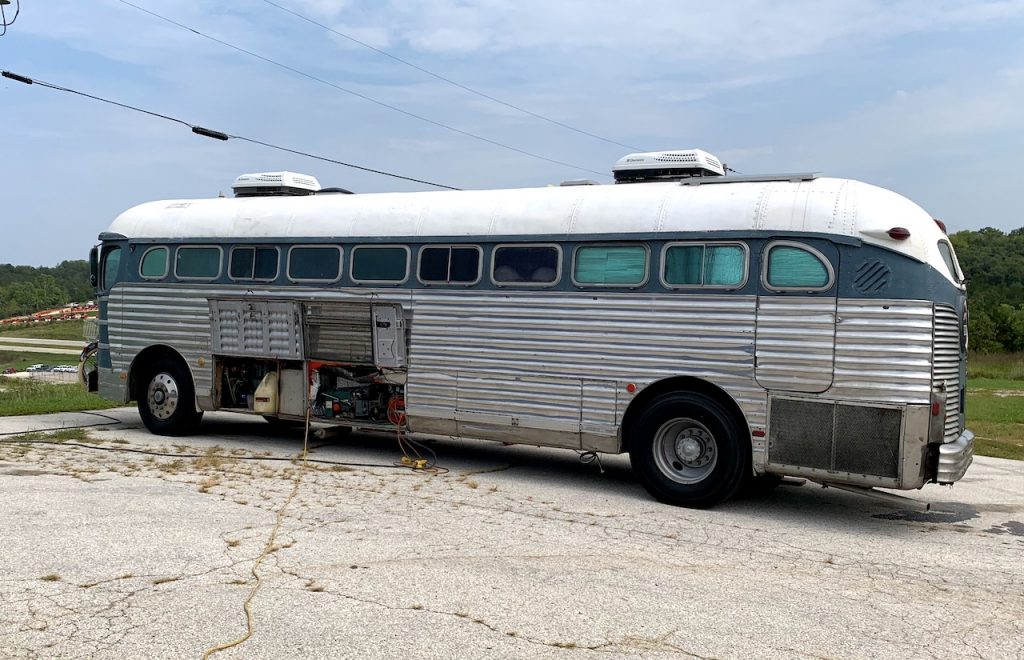 During the time I watched they were working on a wheel. Lots of phone calls trying to find parts for these ancient beasts. And everything is heavy.
During the time I watched they were working on a wheel. Lots of phone calls trying to find parts for these ancient beasts. And everything is heavy.
I’m old enough to remember when a Greyhound or Trailways bus was a pretty nice way to get somewhere in a time before every man, woman and child had their own car. There are still a lot of these old buses out there. According to traveling bus mechanic, they built them really well until someone figured out they could sell more buses if they engineered in some planned obsolescence.
Update: Okay, I find this amazing. Scott has a very $ucce$ful YouTube channel. And after working his ass off yesterday in the mid-Missouri heat, he uploaded a couple of videos recounting the work he did on George’s video. And I think he was taking question live while streaming the video! Which is very detail and runs 30 minutes. This, my friends, is how you build a huge YouTube audience.
Royal Enfield Motorcyle
This is Dan astride his Royal Enfield motorcycle. Dan’s a big guy and the motorcycle is smaller than the big Harleys and BMWs most of the regulars ride. He’s ridden them all and likes the Enfield a lot. More affordable than other brands.
Car dealerships are doomed
Long-time auto exec Bob Lutz thinks car dealerships are doomed. They have 20 to 25 years left. Autonomous vehicles will completely disrupt the industry.
”Are they going to be fun? Absolutely not,” he said. “There will be no joy in sitting in an autonomous vehicle …. But it’s going to be enormously efficient.”
He suggested that parents will be willing to place their children in autonomous cars to take them to day care, soccer practice or school. He said they would be able to give their children limited access to a vehicle subscription service that would let them call cars to take them to preapproved locations, and that access could be expanded as they get older.
”When you send them off to college, you won’t send them with a car, you’ll send them with a subscription to a driverless vehicle service that they can use at their leisure,” he said.
I think it’s been a long time since cars were cool (not that I was ever a car guy). They’re all look like gray blobs of molded plastic. Lutz says the car of the future will just be a “module.”
He likened the modules to subway cars: Passengers don’t know who makes them, only that they get the riders to their destinations.
If I can drive my (mythical) Land Rover for five or ten years — and it’s as much fun as I hope it is — I’ll count myself lucky.
Why I don’t ride a motorcyle
The end of human-driven vehicles
Bob Lutz worked for Ford, General Motors, Chrysler, and BMW, usually as a product guru. I believe he was the guy responsible for the Dodge Viper. He predicts that in 20 years (at the latest) human-driven vehicles will be legislated off the highways.
The end state will be the fully autonomous module with no capability for the driver to exercise command. You will call for it, it will arrive at your location, you’ll get in, input your destination and go to the freeway. On the freeway, it will merge seamlessly into a stream of other modules traveling at 120, 150 mph. The speed doesn’t matter. You have a blending of rail-type with individual transportation.
Uber and Lyft
Relied on Uber and Left to get around in San Diego last week and every ride was a positive experience. Never waited more than 8 or 10 minutes for a ride; drivers were all courteous; cars were very clean. And in almost every instance, the driver took Uber and Lyft hails. The little emblem in the windscreen had Uber logo on one side and Lyft on the reverse.
I had a problem (with my credit card) the first night and had to call a local taxi. Took half an hour to get picked up. I find myself taking more trips than I would if relying on taxis. Just don’t see how taxis can compete. There’s something about opening the app and seeing how near or far the Uber and Lyft cars are, then watching as it approaches my location.
How self-driving cars could change real estate
Driverless cars could become a reality in five years, and will profoundly affect real estate within eight or nine years. A few possibilities:
- Roughly 15 to 20% of your living space constructed in the average home is devoted to the garage
- Each urban area will have a hub, but it won’t be in the expensive part of town — it will be in the cheaper part of town, right off the freeway
- Fewer parking lots. In 2016, in the D.C. area, commercial underground parking garages added 10-12% to the cost of office construction. In residences, each additional parking space increased the cost of development per unit by 25%. Driverless cars could make these parking lots a relic of the past
- There are 125,000 gas stations in the United States in prime real estate, you won’t need those anymore

